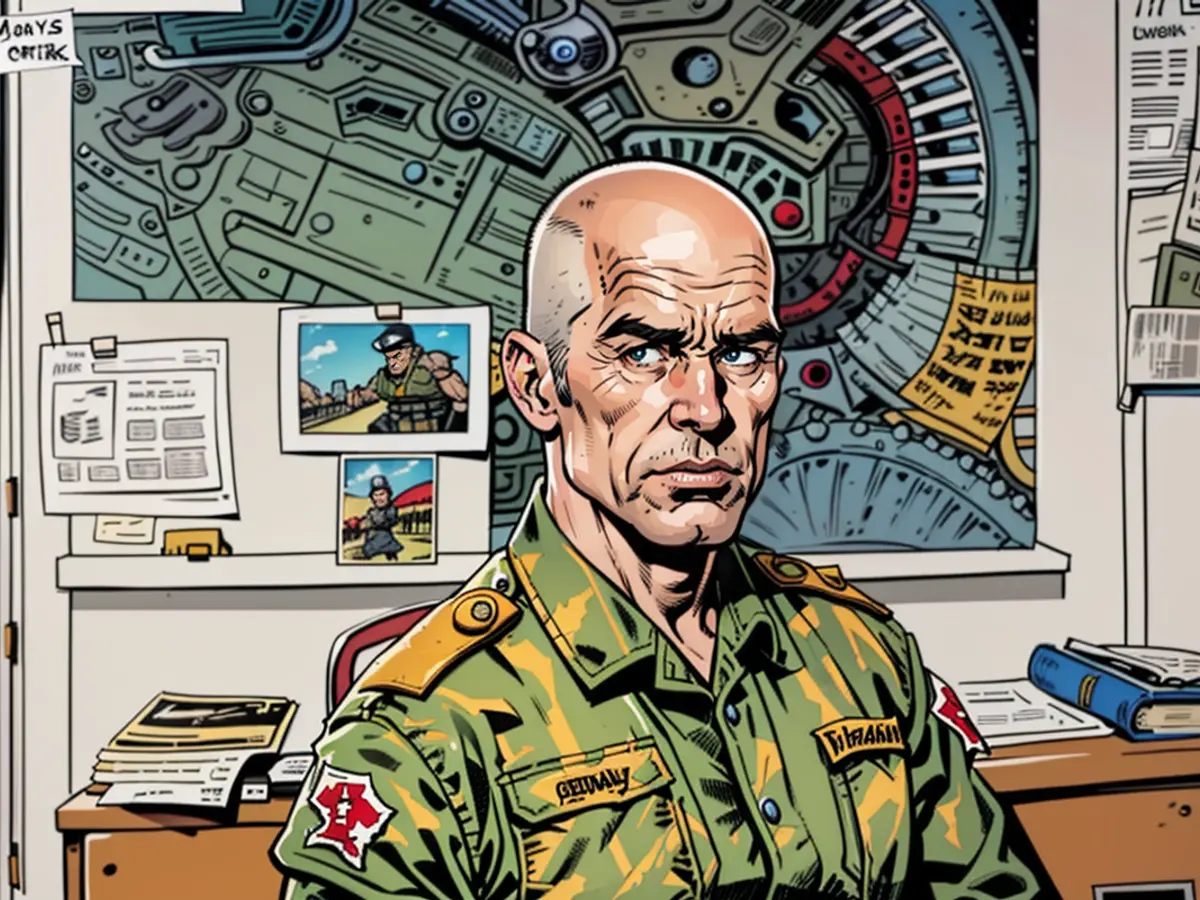Zelenskyy demonstrates less strategic prowess at poker compared to Putin.
ntv.de: The Ukraine reported intense combat over the weekend in Wuhledar and Pokrovsk. Can you shed light on this situation?
Markus Reisner: The high point of Russia's summer offensive is presently underway. Russia is aiming to bring about results before the upcoming muddy season in three to four weeks. In the Donbass, the Russians are assaulting at multiple locations. In the Kupyansk region, they are making progress at Pishchevik and are near the Oskil River. However, things are becoming more critical in the central region of the Donbass, including Pokrovsk, the topic at hand.
What's the current situation in Pokrovsk?
I don't foresee the Russians capturing the city before the start of the muddy season. Pokrovsk was a crucial logistics hub in Ukraine's third and final defensive line. With nothing behind it until the Dnieper River, Pokrovsk being within range of Russian artillery now means we must presume that the Russians will reduce the city to ruins to weaken it for an attack, similar to what they did to other Ukrainian cities like Lysychansk or Bakhmut.
The town of Wuhledar, situated south of Pokrovsk, is reportedly on the brink of collapse.
The Russians are pushing towards Pokrovsk on its flanks, at Torez in the north and Wuhledar in the south. Wuhledar is poised to fall. The city is operationally encircled by Russians, with its escape routes under fire. The 72nd Mechanized Brigade is essentially trapped in Wuhledar. Its commander was relieved on Sunday.
Given reports of mistreatment of Ukrainian prisoners of war by Russia, can Kyiv let these troops fall into Russian captivity?
The brigade initially had 2,000 to 3,000 soldiers. Now, there are reports of several hundred to a few thousand trapped in the city. Negotiations for the withdrawal of Ukrainian soldiers are happening, with the question being whether the Russians will grant this permission. There's also the possibility of a localized Ukrainian counterattack to aid in the withdrawal from Wuhledar. However, the Russians have brought in an additional 5,000 soldiers to definitively seal the encirclement. Should they be captured in Russia, Ukrainians face the risk of torture and starvation. The images of Ukrainian prisoners returned after prisoner exchanges serve as a grim reminder of this.
Let's discuss the Russian region of Kursk, where Ukraine holds considerable territories. What's happening there?
Russia launched a counterattack on the western front of the territories controlled by the Ukrainians approximately ten days ago. The Russians initially gained some ground, but now the fighting is primarily restricted to localized counterattacks from both sides. The Russians maintain pressure on the western flank of the Ukrainians using artillery and aerial strikes. These are attrition attacks that Ukraine finds difficult to handle. To do so, they would need to attack airports and ammunition depots deep in Russia, but the Western allies of Kyiv are still unwilling to permit this.
We're talking about Ukrainian President Volodymyr Zelensky's trip to the U.S. There, he presented his so-called victory plan. The response was less than enthusiastic.
Zelensky failed to achieve his objectives. It's evident: Putin is a more skilled negotiator than Zelensky. A report by the "New York Times" indicates that Moscow might retaliate against Ukrainian attacks utilizing Western long-range missiles by targeting the U.S. and Europe directly. Moreover, the article suggests that Washington doesn't anticipate extensive incursions into Russia having the same impact as Kyiv does.
What were the consequences of these U.S. assessments for the soon-to-be final significant weapons package before the U.S. presidential elections?
The package primarily consists of air defense systems, weapons, and ammunition. It also includes AGM-154 Joint Standoff Weapon air-to-ground missiles, highly precise glide bombs with a range of 160 kilometers. Kyiv had hoped for AGM-158 Joint Air to Surface Standoff Missiles, which have a range of up to 1,800 kilometers. Zelensky won't receive such long-range missiles from the U.S., Germany (which won't deliver the Taurus system), or Britain (which is withholding theirs).
What remains of Zelensky's visit? He was aiming to demonstrate that Ukraine could make Putin concede with its bombing attacks?
U.S. media have critically evaluated this strategy. I interpret the U.S. government's actions as signaling to Kyiv that Ukraine needs a more realistic strategy. The U.S. government apparently does not believe that Ukraine can fully reclaim the occupied territories. A ceasefire could only result from a tough compromise. This doesn't mean that the U.S. will abandon Ukraine; it is vital as a buffer zone between Russia and NATO. However, Washington seems to be urging Kyiv to pursue a higher level of compromise.
Despite Kyiv's drone attacks deep into Russian territory, haven't they shown they can harm Russia? Or are these attacks merely for show?
Consider the attack on the ammunition storage in Toropets, where Ukraine managed to eliminate around 30,000 metric tons of ordnance. For context, the explosive power of the Hiroshima and Nagasaki bombs was 16,000 and 22,000 tons respectively. The challenge lies in a military term called 'saturation': consecutive attacks are crucial to overwhelm the enemy. It's like a boxing match, the opponent shouldn't get a chance to recover. Unfortunately, Ukraine can only deliver a few blows per round, hoping its opponent weakens. Thus, the ongoing war of attrition, lasting for 950 days, shows no signs of deterrence from Russia so far.
Russia's military-industrial complex is bolstered by allies like Iran, but what if Iran itself is under pressure due to its funds being diverted to Hezbollah's conflict with Israel?
This could impact Russia negatively.
In the event of Iran's suppliers cutting off deliveries, Russia might struggle to maintain its war effort. Current pressures faced by Iran include Israel's aggressive targeting of Hezbollah, which is sponsored by Tehran, as well as conflicts with Hezbollah's allies, the Iran-backed Houthi rebels in Yemen. As a result, Iran might reprioritize its weapons exports to help Hezbollah and the Houthis.
Is Ukraine competing with Israel for US support?
It's a plausible scenario considering the constraints of US resources. The less support Ukraine gets, the more reliant Israel becomes on US supplies. Concerns are already being raised in the US about depleting stockpiles. For instance, since last year, the US has dispatched around 8,500 Javelin anti-tank missiles to Ukraine. However, the annual production is just 800 pieces, meaning the US has already supplied over ten years' worth of production in this category alone.
Sebastian Huld interviewed Markus Reisner
The ongoing intense combat in Pokrovsk is part of Russia's summer offensive aimed at the Donbass region. The Russians are pushing towards Pokrovsk from its flanks, including Wuhledar to the south, and the city is operationally encircled by the Russians, with its escape routes under fire.
Given the critical situation in Pokrovsk and the reports of Russia's mistreatment of Ukrainian prisoners of war, it raises concerns about the fate of the 72nd Mechanized Brigade trapped in Wuhledar, as they could face the risk of torture and starvation if they fall into Russian captivity.









